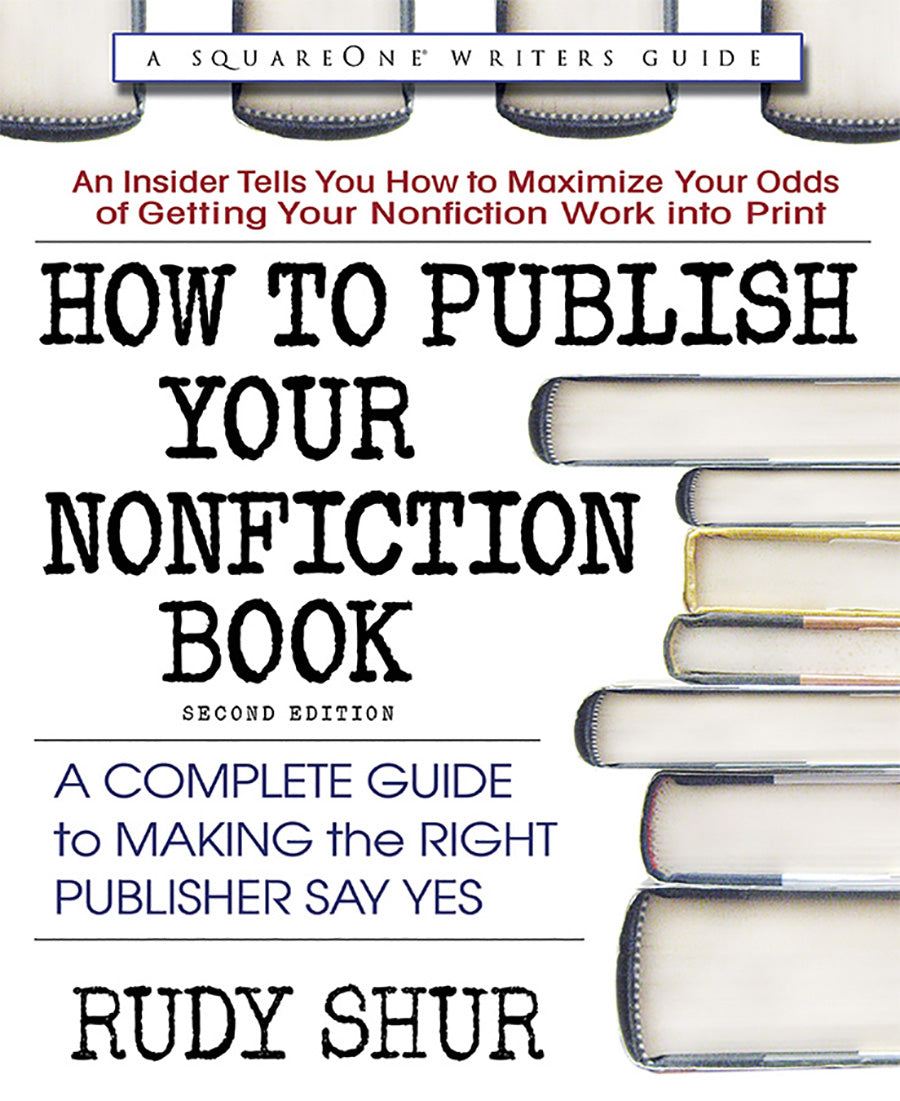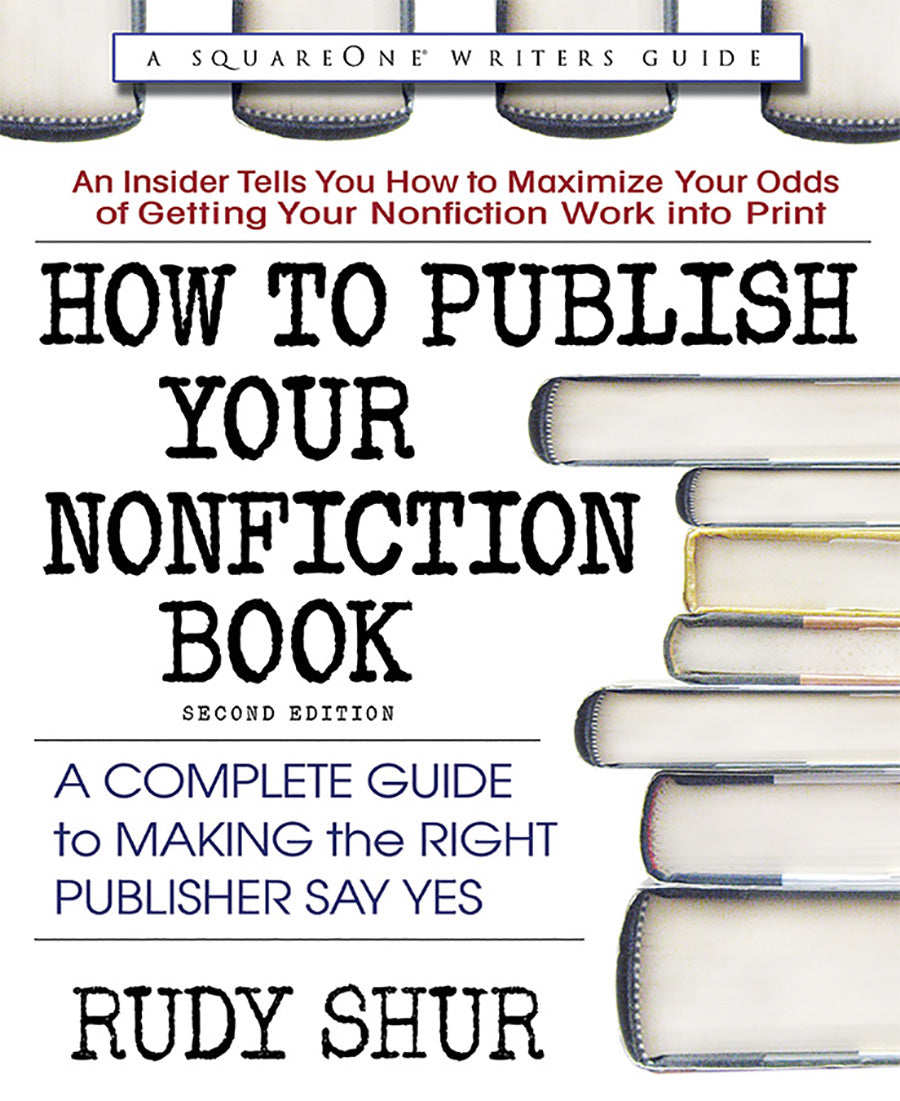So, you have a great idea for a nonfiction book, but you don’t know a thing about how to get it published. Where do you start? What should you send? Are some book publishers better than others? So many questions—but where do you find the answers? The fact is that most budding writers are in the dark when it comes to the publishing world—as are many published authors. How to Publish Your Nonfiction Book was written to provide you with an insider’s knowledge of how publishing companies operate. Now, in response to a rapidly changing industry, author Rudy Shur has revised and updated this complete guide to making the right publisher say yes to your nonfiction book.
This edition of How to Publish Your Nonfiction Book starts off by helping you define your book’s category, audience, and marketplace so that you know exactly where your book “fits in.” It then guides you in choosing the best publishing companies for your project and teaches you how to write a winning submission package. Once you've learned how to take these steps, the Square One System tells you exactly how to submit your package so that you optimize success while minimizing your time, cost, and effort. Also included is a special section on contracts that will turn legalese into plain English, allowing you to be a savvy player in the publishing game. Most importantly, this book will help you avoid the most common errors that so often prevent writers from reaching their goal.
Dreaming of seeing your book in print is easy. Getting it published can take some work. With How to Publish Your Nonfiction Book in hand, you have a proven system of getting your book from the desk drawer to the bookstore.
Rudy Shur began his publishing career working for Charles E. Merrill Publishing Company and later William C. Brown Publishing Company. In 1976, he co-founded Avery Publishing Group, where he was responsible for the acquisition of over 1,000 nonfiction titles, many of which became bestsellers. Mr. Shur has lectured extensively on the topic of nonfiction publishing at numerous universities and colleges throughout the country. Currently, Mr. Shur heads the editorial program of Square One Publishers in Garden City Park, New York.
Contents
Acknowledgments, vii
A Note on Gender, x
Preface, xi
1. An Introduction, 1
2. Where Does Your Book Fit In?,
3. The Business of Publishing,
4. Choosing the Right Publisher,
5. Preparing the Package,
6. Using the Square One System,
7. The Deal,
8. Back to Square One,
9. To Self-Publish or Not to Self-Publish,
Conclusion,
Glossary,
Resource List,
Index,
"[Author and publisher] Rudy Shur draws upon his years of experience and expertise to provide aspiring writers—who may have a great idea for a nonfiction book, but often don't know a thing about getting it published—with practical answers to such questions as: Where do you start?; What should you send?; and Are some book publishers better than others?, in the pages of How to Publish Your Nonfiction Book: A Complete Guide to Making the Right Publisher Say Yes . . . help(s) writers define their book's category, audience, and marketplace so that you know exactly where your book 'fits in' . . . Most importantly, How to Publish Your Nonfiction Book will help neophyte writers to avoid the most common errors that so often prevent them from reaching their publishing goals. Impressively written, organized and presented, How to Publish Your Nonfiction Book is extraordinarily 'user friendly' and an absolute 'must' for anyone wanting to write (and have published!) a nonfiction book -- and an essential, core addition personal, professional, community, and academic library Writing/Publishing instructional reference collections."
Preface
Over the past thirty years, I have lectured to hundreds of writers at colleges and publishing workshops throughout the country. The topic of my lectures? How you can get your nonfiction book published. And I must say that I have always enjoyed the experience. Not only have I learned a great deal from the people who attended, but I have also gotten some great book leads. It’s not always easy to get your nonfiction book into publication. However, if you understand some of the basics of publishing and then use a solid system to apply what you’ve learned, you can definitely increase your odds of getting your work into print. Well, at least that’s the main thrust of my speech. In the question-and-answer session I hold after each lecture, at least one member of the audience has always asked, “So, how come you haven’t written a book yourself?” And my response has always been pat: “I am the publisher. You are the writers. Your job is to write, mine is to publish.” It was always that simple to get out of it. However, in May of 2000, when two of my editors posed the same question, I had a bit more trouble escaping—possibly because they had me cornered in my office. “If you know so much about publishing,” they said, “why not put it down in a book? That’s what you always tell other people who know a lot about a subject. Hey, we’ll even edit it for you.” Ten months later, with the help of these two skilled editors, Joanne Abrams and Marie Caratozzolo, the manuscript was completed. Of course, those ten months were not easy ones. From the beginning, I certainly felt that I knew my subject; after all, I’d been in the business long enough. And I’d not only published thousands of books, but I’d also guided many writers in getting their books published with other companies. Still, I was aware of the challenges involved in writing a book that really accomplishes what it sets out to do. The very first thing I did was to look at the books that were already out there on publishing. (As you’ll find out, it’s always wise to check out the competition.) What did I find? Well, there certainly are plenty of books out there on the subject, but oddly, very few of them focus on works on nonfiction. Instead, most of them talk about all kinds of publications, from works of fiction to magazine articles to short stories. The information that directly pertains to the nonfiction book is scattered and skimpy, at best. And then there are the few books that specifically address the nonfiction writer. Surprisingly, even these books typically have a host of drawbacks. For instance, most provide little information to help the author understand the category into which his or her book falls—a step that is critical if the writer is to target those publishers that might even consider looking at the project. Some of the categories mentioned in these books don’t even exist as a classification within publishing houses! Moreover, few books provide the author with an accurate picture of how the business of book publishing actually works. And none of the books presents clear, step-by-step instructions for writing an effective submission package; picking the best publishers to receive the package; sending the package out in the most efficient way possible; and tracking—and understanding—the results. My work was cut out for me. So, laptop computer in hand, I set out to create a truly useful book—a book that would provide you with the information you need about the book publishing business, and carefully guide you in applying that information to your particular work of nonfiction, whether it’s a trade book, a textbook, a scholarly work, or a reference work. I do this through eight chapters, each of which adds more pieces to the puzzle that is publishing, and guides you further along the steps involved in getting your book into publication. Since the first edition of this book, however, a great deal has changed in the world of book publishing—from the mergers and acquisitions of many larger mainstream houses to the impact of having every book ever published now available somewhere online; and, from the invention of the Espresso Book Machine, which allows bookstores’ the ability to have a single book printed while the customer waits, to giving every writer the option to self-publish and market his or her own work. Yes, things have changed greatly, so it was necessary to update this book and guide you through the many new opportunities that lie ahead as you evaluate your goals as an author.
PODCAST INTERVIEW - "AUTHOR U - YOUR GUIDE TO BOOK PUBLISHING" WITH DR. JUDITH BRILES
https://podcasts.apple.com/us/podcast/author-u-your-guide-to-book-publishing/id493527713?ign-Jampt=uo%3D4&mt=2





